The Turkish Riviera, known as the Turquoise Coast, is more than a pretty shoreline. It mixes ancient history, striking scenery, and rich local culture. This sunny corner of southwestern Turkey touches both the Mediterranean and Aegean Seas and makes a great getaway. History lovers can roam old ruins, nature fans can enjoy mountain and sea views, beachgoers can swim in clear water, and food lovers can try great local dishes. Busy port towns, quiet coves, and steep mountains meeting the sea all sit side by side, giving you both action and calm.
What Is the Turkish Riviera?
The Turkish Riviera is a famous stretch of coast in southwest Turkey, loved for its bright blue water and views where mountains drop to the sea. It stands out because it blends wild nature with deep history in one place.
Legend says Mark Antony gave this coast to Cleopatra as a gift. Whether true or not, it shows how people have long admired this shoreline.
Where Is the Turkish Riviera Located?
This coast runs across southwestern Turkey along the Aegean and Mediterranean. It starts near the Bodrum area and goes south to Antalya, covering more than 1000 kilometers of shore.
Key cities and towns include Izmir, Bodrum, Marmaris, Fethiye, Kaş, Kalkan, and Antalya. Many cultures passed through here, leaving ancient sites across the region.
What Makes the Turkish Riviera Unique?
Few coasts pack in so much. You’ll find pale sand, warm blue water, old cities backed by high peaks, and quiet inlets. This was ancient Lycia, and you can still see its rock-cut tombs and hilltop ruins.

Life here moves at an easy pace, which draws both locals and foreigners to buy holiday homes or settle full-time. Sailors love the many coves and small islands, some reachable only by boat, so yacht trips and classic wooden gulet cruises are very popular. Strict building rules and protected areas keep much of the shore undeveloped and clean.
Best Time to Visit the Turkish Riviera
The coast has a Mediterranean climate with hot summers and mild winters. May to October is the best window for beach time and water sports. During these months, beach clubs, tours, and activities run at full pace.
To skip the hottest days and crowds, choose May, June, September, or October. Early October can still be great for swimming. For the Lycian Way, go in spring (April-May) or autumn (October), as summer gets very hot and winter brings heavy rain.
| Month | Temp | Sea | Notes |
|---|---|---|---|
| Apr | Warm | Cool | Good for hiking |
| May-Jun | Warm-Hot | Warming | Fewer crowds than peak |
| Jul-Aug | Hot | Warm | Busy, best for beach time |
| Sep-Oct | Warm | Warm | Great mix of weather and space |
How to Plan Your Turkish Riviera Trip
This coast is long, so pick what matters most to you: ruins, beaches, hiking, sailing, or nightlife. With 1000+ kilometers of shoreline, plan your route to save time.
How Many Days Do You Need for the Turkish Riviera?
Seeing everything in a few days isn’t realistic. A 7-day plan lets you balance ruins, beaches, and nature. Two weeks lets you reach quieter spots and take a boat trip without rushing.
Adding Istanbul or Cappadocia? Aim for about three weeks to cover both coast and inland sights at an easy pace.
How to Get to the Turkish Riviera
Several airports serve the area: Dalaman, Antalya, Izmir Adnan Menderes, and Milas-Bodrum. Many travelers fly to Istanbul first, then connect.
| Airport | Best For | Sample Areas |
|---|---|---|
| Antalya (AYT) | Eastern Riviera | Antalya, Belek, Side |
| Dalaman (DLM) | Central coast | Fethiye, Ölüdeniz, Marmaris |
| Izmir (ADB) | Western Aegean | Çeşme, Alaçatı, Ephesus |
| Milas-Bodrum (BJV) | Bodrum area | Bodrum, Yalıkavak, Gümüşlük |
Direct seasonal flights reach these airports from many countries, especially in summer.
Best Ways to Get Around the Turkish Riviera
Renting a car gives you the most freedom. The D400 coastal road is in good condition, and signs are often in English and Turkish. Driving makes it easy to stop at small beaches, villages, and ruins. Fuel and rentals are fairly priced.
Intercity buses link all main towns and are comfortable and low-cost. For short hops, use local minibuses (dolmuş). For a boat view of the coast, especially between Fethiye and Antalya, join a “blue cruise” on a wooden gulet to reach coves and islands you can’t access by road.
Turkish Riviera Map and Key Regions
The coast starts around the Bodrum Peninsula on the Aegean and runs east to Antalya on the Mediterranean. Main areas include:
- Bodrum Peninsula: Lively nights, high-end stays, and Bodrum Castle.
- Marmaris & Dalyan: Beaches, marinas, rock tombs, and Iztuzu turtle beach.
- Fethiye & Ölüdeniz: Blue Lagoon, paragliding, and the Lycian Way trailhead.
- Kaş & Kalkan: Pretty towns, great diving, and fine dining.
- Antalya: A big city with old sites, waterfalls, and access to the Taurus Mountains.
- Çeşme & Alaçatı: Near Izmir; windsurfing, quaint streets, and beach clubs.
Match these areas to your interests, whether you want busy resorts, quiet bays, or ancient ruins.
Top Destinations along the Turkish Riviera
Each stop on this coast has its own style, from big cities to small seaside towns.
Antalya
Antalya is one of Turkey’s largest coastal cities and a common starting point for this coast. It blends a lively modern scene with a historic center and easy access to nature. Many travelers also buy second homes here for the nightlife, shopping, and food options.
Its airport makes arrivals and departures simple, and the city works well as a base for day trips.
Things to Do in Antalya
Walk Kaleiçi (Old Town) with its narrow lanes, wooden Ottoman houses, and Hadrian’s Gate. Stroll the old harbor and head up to Republic Square for views and the giant flag.
See the lower Düden Waterfalls where the river drops into the sea. Visit Aspendos, one of the best-kept Roman theaters anywhere. Swim at Konyaaltı or Lara Beach, play golf in Belek, or visit Side’s old center. Hikers can set out on sections of the Lycian Way from here.
Where to Stay in Antalya
In Kaleiçi you’ll find small boutique hotels in restored Ottoman buildings for a cozy, historic feel. Lily Boutique Guesthouse is one friendly pick with helpful local tips.
Along Lara and Konyaaltı you’ll see many four- and five-star resorts, often all-inclusive. For a central base with solid comfort, Kalispera Hotel sits near cafes and restaurants. Whatever you choose, Antalya offers easy access to the coast.
Fethiye & Ölüdeniz
Fethiye is bigger than it first looks and makes a great base. It sits under Babadağ mountain and has a busy marina. Don’t miss the Lycian rock tombs above town. Many hikers start the Lycian Way here. Nearby resorts-Çalış, Hisarönü, Ovacık, Üzümlü, and Ölüdeniz-draw many visitors and expats.
Ölüdeniz is famous for the Blue Lagoon and long beaches, perfect for swimming and paragliding.
Highlights: Blue Lagoon and Butterfly Valley
Ölüdeniz’s Blue Lagoon has clear turquoise water, white pebbles, and a green mountain backdrop. You’ll often see paragliders gliding down from Babadağ.

Butterfly Valley sits between high cliffs a short boat ride away. You can also hike in from Faralya, though it’s steep. Butterflies appear in some seasons, but the real draw is the wild, quiet setting.
Accommodation in Fethiye
Fethiye town has everything from cheap hostels to nicer hotels. Sakura Hostel is central and handy if you plan to hike the Lycian Way. Staying near the old town puts you close to the marina and restaurants.
Ölüdeniz leans toward resort stays with many hotels and pools near the beach. Olympos Hotel is older in style but good value and close to activities. For peace and history, check out stays in Kaya Köyü, the abandoned Greek village near Fethiye.
Bodrum
Bodrum sits where the Aegean meets the Mediterranean and is known for its stylish feel and nightlife, making it popular with couples. Bodrum Castle holds a museum of underwater archaeology with shipwrecks and amphorae. The town buzzes with chic cafes, smart restaurants, and bars. Nearby, Gumbet and Yalıkavak attract large yachts, and GölTürkbükü is a favorite with the fashion crowd.
Bodrum is also a good launch point for day cruises and trips to close Greek islands, with water so clear you can see far below.
Bodrum’s Attractions and Nightlife
Walk the waterfront from the marina to the Castle of St. Peter for sea views and history. Visit the fish market, pick a fish, and have it cooked at a nearby spot. Try çiğ köfte and kebabs at places like Otantik.
Nightlife here is lively, and nearby Marmaris has a long bar street that turns into a party zone. For a quieter day, go to Gümüşlük for seaside seafood or to Çökertme, a small beach village with clear water.
Where to Stay in Bodrum
Bodrum leans upscale but has a range of options. Caresse, a Luxury Collection Resort & Spa, Le Méridien Bodrum Beach Resort, and The Bodrum EDITION all offer sea views, pools, beach clubs, and spas.
If the town center feels crowded, these resorts give a calmer base, though they’re often outside the busiest areas. For a local feel, try small B&Bs in fishing villages like Gümüşlük or Çökertme.
Marmaris
Marmaris sits in a green valley facing a large bay, with long beaches and a lively center. It’s close to Dalaman Airport. The marina scene is strong here, and sailing has long been part of local life.
Families and solo travelers like the wide mix of things to do. Many expats and holiday homeowners also choose Marmaris.
Top Activities in Marmaris
The nightlife is big, especially along bar street after dark. By day, explore the Old Town, visit Marmaris Castle, and walk the marina. Beaches include Uzun Yalı, İncekum, and Marmaris Halk; nearby İçmeler has a family-friendly beach.
Try sailing or a boat tour, visit a water park, or head into Marmaris National Park for nature walks.
Where to Stay in Marmaris
You’ll find many all-inclusive resorts with pools, spas, and beach access, plus smaller hotels and apartments in town and in İçmeler. Because Marmaris fills up in peak months, book early to get the place you want.
Kaş and Kalkan
Kaş (pronounced “cahsh”) is a relaxed seaside town with clear, jewel-toned water and a friendly evening scene. It’s perfect for couples and divers, with rich marine life and good visibility. Cobbled lanes, small cafes, and boutiques make wandering a joy.
Kalkan is known for luxury and views. Expect big villas with infinity pools and glass walls that face the sea. It’s a great pick for high-end stays and fine dining rather than deep traditional culture.
Things to Do in Kaş and Kalkan
In Kaş, roam the old streets, see the Antiphellus Amphitheater, and stop by Kaş Square. For a great view, go to Kaş Panorama. Diving here is excellent, with sites that include amphorae and other finds. Sea kayaking over the Sunken City is a highlight. Friday brings a busy local market.
In Kalkan, spend days on blue cruises, or rent a private boat with a captain. Evenings shine with rooftop restaurants serving seafood, meze, and raki at sunset. Kalkan has more bars; Kaş stays calmer at night.
Hidden Gems: Kekova and Simena Castle
Off Kaş, the island of Kekova holds the famous Sunken City, a Lycian and Roman port that slipped into the sea after a 2nd-century quake. You can’t swim over the ruins, but you can see walls and stairways from a boat or from the shore. Sea-kayak tours get close without harming the site.
Across from Kekova, the village of Kaleköy has Simena Castle, which overlooks the bright blue bays. It’s only reachable by boat and makes a lovely day trip-people also come for its well-loved ice cream.
Çeşme and Alaçatı
On the Çeşme peninsula near Izmir, these towns offer laid-back days, stylish beach life, and historic charm. Çeşme has a marina, beaches, and a castle worth a visit.
Alaçatı sits inland with cobbled lanes and stone houses. It’s known for boutique shops, galleries, and great local food.
Beach Life and Windsurfing in Çeşme
Çeşme’s beaches are perfect for swimming and sun. The steady winds make it one of the best places in the country for windsurfing. Schools and rentals serve all levels.
Relax on the sand, take a dip, or spend a day at a beach club. The seaside promenade is great for an evening walk.
Alaçatı’s Old Town Highlights
Alaçatı’s Old Town is a maze of narrow lanes with stone houses covered in bougainvillea. It’s car-free and easy to explore on foot. Try Asma Yaprağı or Dutlu Kahve for local dishes, then browse boutiques and art spaces.
It feels like an old Greek village, and while it lacks huge monuments, the whole town is a living showcase of its past.
Other Notable Spots: Dalyan, Cirali, Patara
Dalyan is a small riverside town known for cliff-side tombs, boat trips to mud baths by Köyceğiz Lake, and Iztuzu Beach, a key nesting site for loggerhead turtles.
Cirali, near ancient Olympos, has a long quiet beach, nearby Phaselis, and the Eternal Flames of Chimera, where natural gas has burned for centuries. Olympos mixes ruins, hiking, biking, climbing, and sailing.
Patara has Turkey’s longest beach at 18 km, with dunes and ruins of the ancient city. From here you can also visit Letoon, Pınara, Sidyma, and Xanthos.
Natural Wonders and Historical Sites
This coast pairs ancient cities with dramatic nature. You’ll find sandy bays, deep gorges, and well-kept ruins that show thousands of years of stories.
Famous Beaches: Patara, Kaputaş, Iztuzu
Patara Beach stretches for 18 km with golden sand and dunes. The ruins of Patara sit just behind it, so you can mix beach time and history.
Kaputaş Beach, between Kaş and Kalkan, is a steep-sided cove with bright turquoise water. Reach it by boat or by stairs from the road. It’s busy, but the view is worth it.
Iztuzu Beach near Dalyan is nicknamed Turtle Beach because it is a key nesting area for loggerhead turtles. The beach closes 8 p.m.-8 a.m. from May to September to protect them.
Ancient Sites: Ephesus, Xanthos, Aspendos
Ephesus south of Izmir is Türkiye’s best-kept ancient city and a UNESCO site (2015). Plan a full day for the Celsus Library, the grand theater, and the Terrace Houses that show Roman home life. Come early to beat the crowds.

Xanthos near Fethiye was the capital of Lycia and is also on the UNESCO list. It overlooks the Esen River and holds major ruins of this proud ancient culture.
Aspendos near Antalya has one of the finest Roman theaters anywhere, with seating and stage wall still standing. Sunset adds extra magic.
Natural Attractions: Saklikent Gorge and Duden Waterfalls
Saklikent National Park (“Hidden City”) has a deep canyon over 18 km long and up to 300 m high. You’ll wade through cold water and muddy paths-rent water shoes at the entrance. The first section can be fast-flowing and exciting. Nearby Gizlikent Waterfall makes a cool stop.
The Düden Waterfalls near Antalya include a famous lower fall where the river drops into the sea. It’s free to visit and has parking. This is the one to see if you have to choose.
The Lycian Way: Hiking the Turkish Riviera
The Lycian Way is a long-distance trail opened in 2000, running about 500 km from Fethiye to Antalya. It’s one of the best ways to see this coast on foot, with mountain and sea views plus side trips to Roman and Byzantine ruins.
Most walkers do sections rather than the whole trail. Go in October or in April-May for cooler weather and longer days. The path ranges from rocky tracks to forests and old stone roads. Red-and-white marks guide you, but carry a good map (Kate Clow’s version is popular) and an app like Maps.me in case some marks are hard to find.
Sailing and Blue Cruises along the Turquoise Coast
Starting a sailing trip-often called a “blue cruise”-is a classic way to see this coast. Boats reach coves and islands that cars can’t. Trips run from one day to a week or more at a slow, easy pace.

Most cruises use wooden gulet boats with 4-8 guest cabins, ranging from basic to luxury. High-end boats may add jacuzzis, water toys, and extra service. Fethiye and Olympos are common starting points. Expect fresh Turkish meals, swims in clear bays, visits to shore ruins, and stops in small towns. Shared trips are social and bring travelers together.
Cuisine and Dining Experiences
Food along the coast is fresh, simple, and full of flavor, shaped by the sea and long history.
Traditional Turkish Breakfast and Meze
Begin with a full kahvaltı (Turkish breakfast): cheeses like beyaz peynir, simit, jams and honey, olives, tomatoes, cucumbers, and eggs, often with sujuk. Strong black tea keeps coming. It’s a slow meal meant to be enjoyed.
Later, order meze, small plates that pair well with drinks and conversation. Expect eggplant in many forms (like patlıcan salatası), dips, stuffed vine leaves, and midye dolma (stuffed mussels). Sharing is the idea.

Seafood Specialties and Regional Dishes
Seafood is a highlight. Fresh fish is usually grilled or fried with lemon and a simple salad so the taste stands out. In Bodrum, Fethiye, and Kaş, waterfront spots serve daily catches.
Regional favorites include çökertme kebabı from Bodrum (thin veal on tiny fried potatoes with tomato sauce and garlicky yogurt) and çöp şiş (small lamb skewers marinated in olive oil, oregano, and pepper). Don’t miss börek (flaky pastry) or pide (flatbread often compared to pizza).
Wine, Rakı, and Local Drinks
Rakı is an anise spirit made from grapes. Add water and it turns milky-people sip it slowly with meze and salty cheese. It also works after a big meal.
Local wines are worth trying: zinfandel and shiraz from Karnas near Bodrum, and cabernet sauvignon from Sevilen near Izmir. Fresh juices-orange and pomegranate-are everywhere. Turkish tea is a daily staple.
Top Restaurants and Local Markets
On the Bodrum side, Orfoz Restaurant is a standout for seafood. Otantik serves tasty kebabs, and tiny börek shops make quick, cheap snacks. Many towns have fish markets where you pick your fish and a nearby place cooks it for you.
In Antalya, Çıtır Balık Antalya is famous for budget-friendly balık ekmek (fish sandwiches). Fatma Sultan serves good food in a pleasant garden. In Ölüdeniz, Angora Restaurant is a solid choice. Near Ephesus, Amazon Cafe in Selçuk offers a small nightly menu of excellent meze and local dishes. Local markets across the coast sell fresh produce, cheese, olives, spices, and crafts-great for tasting the region.
Where to Stay: Accommodation Guide
You can find every type of stay along this coast, from luxury beach resorts to small guesthouses and low-cost hostels.
Luxury Resorts and Spa Hotels
Bodrum and Kalkan have many high-end options with sea views, private beaches, infinity pools, hammams, and fine dining. Picks include Caresse, a Luxury Collection Resort & Spa, Le Méridien Bodrum Beach Resort, and The Bodrum EDITION. In Çeşme, Reges, a Luxury Collection Resort & Spa, offers sea-view suites and seawater thermal pools.
These places suit travelers who want quiet, comfort, and full service, often with direct access to a cove or beach.
Boutique Hotels and Pension Houses
For more local character, choose small hotels or pensions. In Antalya’s Kaleiçi, restored Ottoman homes serve as cozy boutique stays-Lily Boutique Guesthouse is a friendly example.
Kaş and Alaçatı have many stylish small hotels in their old streets. Kaş Evderhan offers modern rooms, views, and a central spot. Around Olympos, pensions like Mercan Pension provide cabin-style lodging, often with meals, close to ruins and nature.
Budget Accommodation Options
Hostels are common and social. Sakura Hostel in Fethiye is cheap, central, and helpful for Lycian Way plans. Inland, places like Minthat Hotel or Inn 14 Hostel in Ankara keep costs down.
Pensions and guesthouses in small towns can be very affordable and may include breakfast or dinner. Campers and hikers can pitch tents in some areas; on the Lycian Way, some guesthouses rent tents in places like Kabak or Butterfly Valley.
Tips for Booking Your Stay
- Booking.com doesn’t work inside Turkey without a VPN due to a past dispute. Book before you arrive or use a VPN. Other sites and direct bookings are fine.
- Break your trip into stays along the coast to cut back on long drives. For example: Izmir → Ölüdeniz → Kaş → Antalya.
- Peak season (May-Oct) fills up fast. Book early to get better choices and prices.
Travel Tips for a Smooth Turkish Riviera Journey
Good planning helps your trip go smoothly. Sort out money, data, transport, packing, and local manners before you go.
Currency, Payments, and Costs
Turkey uses the Turkish Lira (TRY). The lira has had high inflation lately, so prices can change quickly. Cards are widely accepted, even in smaller places, but carry cash for markets and small vendors. Travel cards like Revolut can help avoid extra fees.
Turkey can be low-cost if you eat local and use public transport, but upscale areas like Bodrum and Kalkan can be pricey. Entrance fees add up too. Sample prices (Sep 2025): Ephesus ~700 TRY, Aspendos ~340 TRY.
Connectivity: Getting Internet in Turkey
At major airports you can buy SIM cards from Turk Telekom, Vodafone, or Turkcell. Bring your passport for registration. Data plans are widely available and work well across the coast.
If you want data right away, buy an eSIM from Airalo before you fly. Hotels, cafes, and restaurants often have free Wi-Fi. Offline maps on apps like Maps.me help with trails and small roads.
Transport: Car Rental Advice
Most big rental brands operate at airports. Consider a one-way rental if your route runs one direction (e.g., pick up in Izmir, drop in Antalya). One-way fees can be worth the time saved.
Traffic can be heavy in Izmir and Antalya. Fuel isn’t cheap, but rental rates are fair. A car lets you reach quiet beaches, small villages, and ruins on your own schedule.
Practical Packing for the Turkish Riviera
Pack light, breathable clothes for May-October. Bring swimwear, sunscreen, a hat, and sunglasses. Wear comfy walking shoes for ruins and towns. For the Lycian Way or canyons like Saklikent, bring hiking sandals or water shoes.
Evenings are casual, but nicer restaurants may call for slightly dressier clothes. Women may want a light scarf for mosque visits; longer skirts or trousers are handy. Carry a reusable water bottle and a quick-dry towel. A universal adapter and power bank are useful.
Safety and Local Etiquette
The coast is generally safe. Keep valuables close in crowded areas. Get travel insurance. Learning a few Turkish words like “Merhaba” (hello) and “Teşekkürler” (thank you) goes a long way.
Turkey is secular, but dress modestly at religious sites. Haggling is normal in markets, not in fixed-price shops or restaurants. Keep conversations polite and steer clear of sensitive topics.
Frequently Asked Questions about the Turkish Riviera
Here are answers to common questions to help you plan.
What Are the Must-See Spots for First-Time Visitors?
Ephesus is a must for its Celsus Library, grand theater, and Terrace Houses. For scenery, the Blue Lagoon in Ölüdeniz is famous and great for paragliding. Bodrum Castle anchors a lively harbor. Saklikent Gorge offers a thrilling walk through cold, fast water. A boat trip to the Kekova Sunken City adds a special look at ruins under the sea. Together, these stops give a well-rounded first taste of the coast.
Is the Turkish Riviera Family Friendly?
Yes. Resorts in Marmaris and Antalya often have kids’ clubs, water parks, and all-inclusive deals. Beaches like Iztuzu near Dalyan and the long sands near Alanya suit families.
Older kids can explore ruins like Ephesus and Aspendos, join boat trips for swimming and snorkeling, and try beginner-friendly canyoning near Antalya. Food options are broad, and locals are welcoming.
What Are the Best Activities for Adventure Seekers?
Paragliding in Ölüdeniz from Babadağ gives amazing views of the Blue Lagoon. The Lycian Way offers multi-day hikes and day sections past ruins and sea cliffs.
For water sports, scuba diving in Kaş and Bodrum brings you to reefs, wrecks, and artifacts. Kayaking around Kekova lets you glide over the Sunken City. Try canyoning near Antalya (Kıbrıs, Hacıoğlan) or rafting in Köprülü Canyon. The mix of mountains, gorges, and clear water means plenty of action.


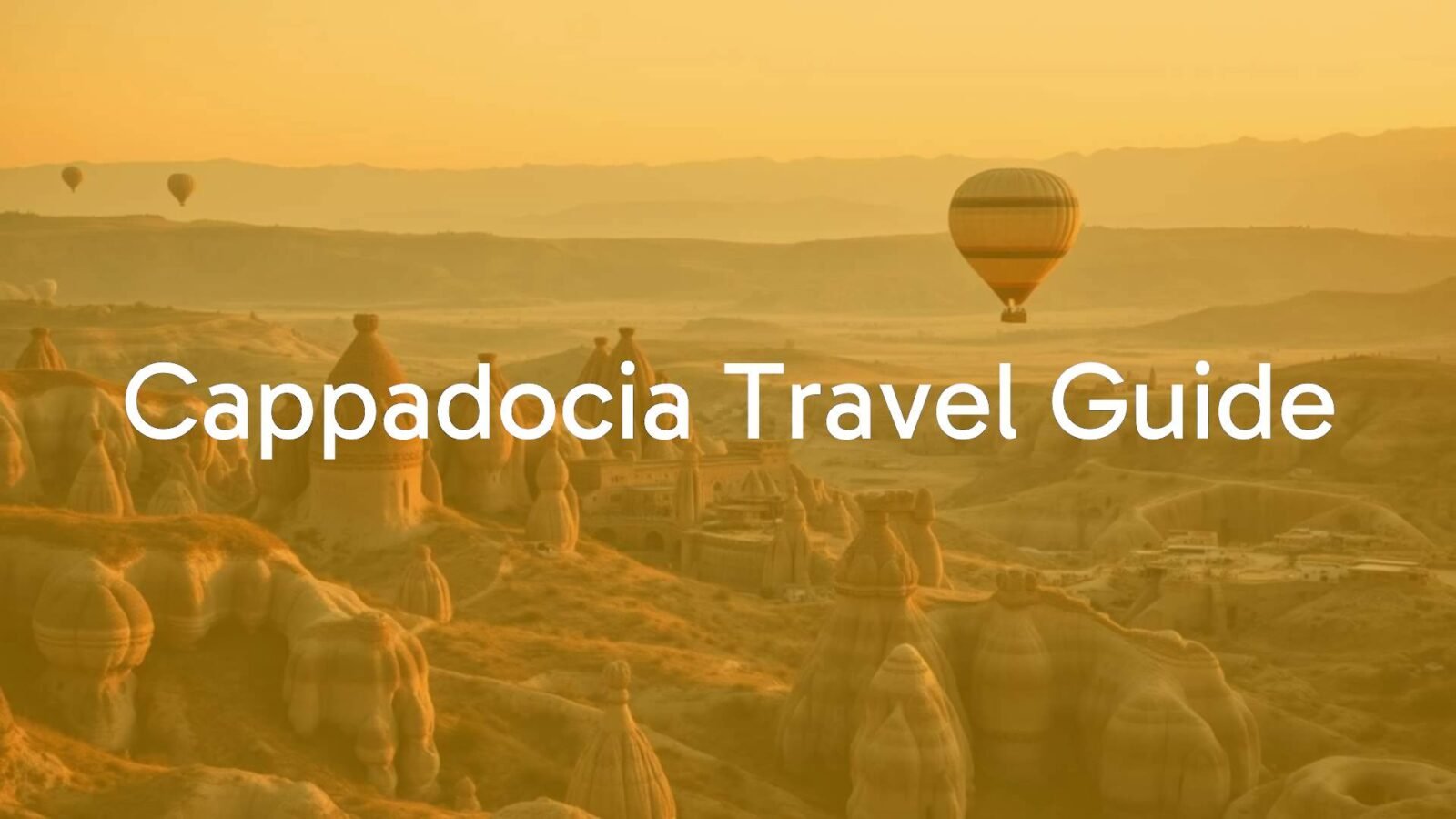
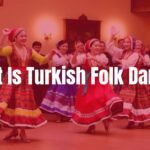

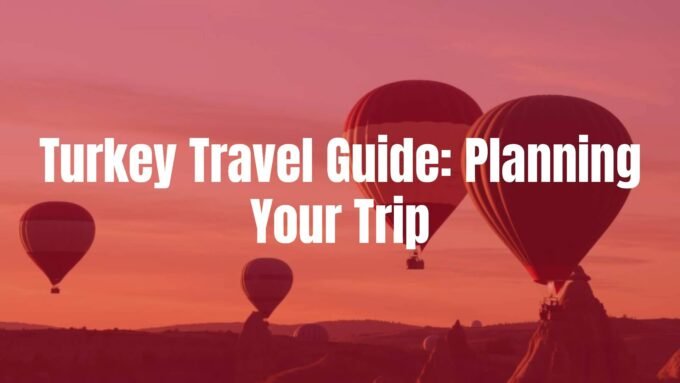



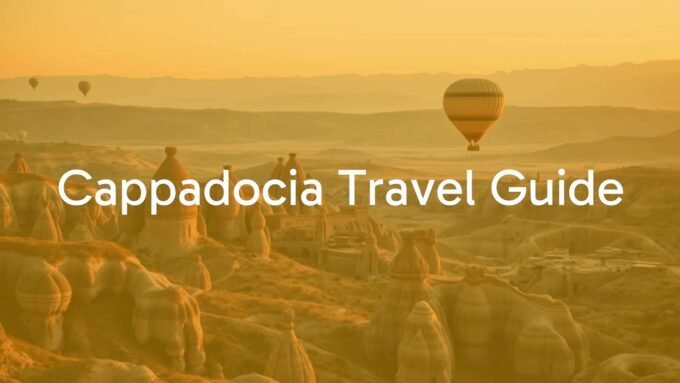
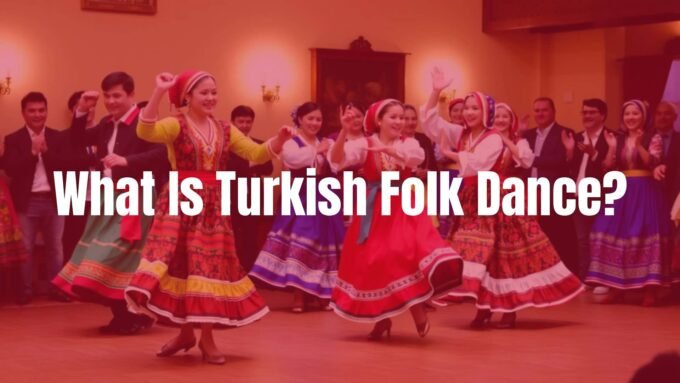
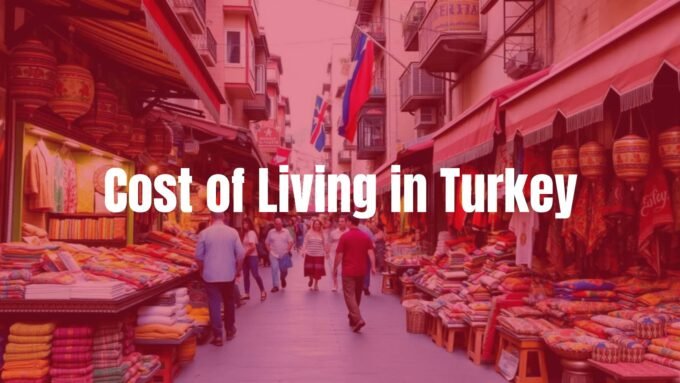



Leave a comment